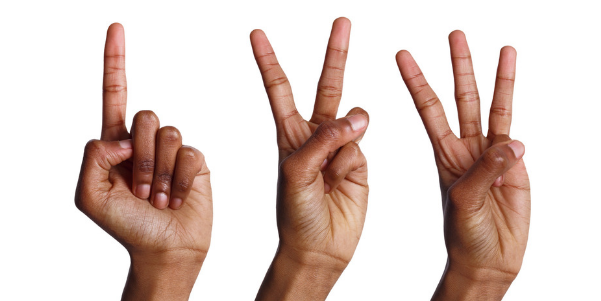Why Language Assets Are Essential to Language Quality
29 Aug 2019

Your documentation and web content have different terms for the same things. Your translators do not really understand your brand, so it’s getting diluted and unrecognizable from your competitors’. On top of that, even though you’ve got high-quality past translations, you pay for every word to be translated each time. All this is affecting your brand and your sales in new markets, and understandably, your boss is wondering how well you’re managing the localization program.
Maybe this resonates with you, in whole or in part. Not to worry, we’re here to help. If you want translated materials that are clear, consistent and effective, then you need to use “assets.” Let’s take a look at the three essential language assets that localization programs and their linguists employ and maintain to ensure current, consistent and appropriate language throughout their products and content.
Didn’t I just translate this?
A translation memory (TM) is a database of previously translated material. It contains source phrases or segments and their translations. That database is then used to “pre-translate” new text. You translate a phrase or segment once, then leverage it over and over to reduce translation costs and increase consistency. It’s pre-paid translation! This works even when the segment isn’t an exact match between texts. There are several categories of leverage:- A “100% match” or “exact match” is a source segment that is exactly the same as a segment in the TM. The TM tool will suggest using this old translation, and the translator will review it to make sure the original translation makes sense in the new text.
- A “repetition” is a repeated occurrence of a source segment in the text. These typically also require little to no work, as the segment has already been translated for this context in the file.
- A “fuzzy match” is a source segment that only partially matches a segment found in the TM. Fuzzy matches come in two categories, high and low, both of which cost you less than a new segment. The TM tool identifies the pieces of the segment that are different for the translator to easily edit or replace.
- A “no match” is a source segment that is either not found in the TM at all, or is a fuzzy match that is below the acceptable threshold. These need to be translated from scratch, but are then saved to the TM for later reuse.
Think about your vibe
Your brand—your vibe, tone of voice, look and feel—is who you are as a company. You want to replicate your brand appropriately and accurately in each market in which you sell your products. To do this, you have to create a style guide, which is a reference document (typically under 20 pages) customized for each of your target markets. The guide will help linguists choose language and grammar so their work will match your brand. This guide should cover things specific to the target markets and company brand, such as:- Date and time formats, numbers, phone numbers, currency, percentages. Is January 3, 2013, expressed as 1/3/13 or 03/01/13?
- Grammar, syntax and spelling. For example, American English “color” versus British English “colour.”
- Audience/target demographic. Is your audience young, middle-aged or senior? Male or female? Many languages have different ways of addressing different types of audiences.
- Style and tone. What is your company’s personality: formal and conservative because your audience is corporate finance, or hip and edgy because you’re targeting young retail consumers?
- Acronyms (localized and non-localized). “ASAP” (“as soon as possible” in English) doesn’t mean anything in another language. You have to make sure linguists know how to convey source concepts in the target languages accurately.
- Web pages, products and services. The style guide should provide an overview of your company’s offerings and links to resources for background knowledge and future reference.
- Key terminology. Highlight the product names and major industry buzzwords or phrases that are essential to your brand. The rest should be in a glossary.
- Logo usage and colors. It’s important to specify your company’s font and color preferences (which can differ per country), as well as when various versions of your logo should be used.
- Localized and non-localized UI elements. If you don’t plan to translate some parts of your website, software UI or product, then it’s best to call that out clearly.
Handling synonyms, antonyms and product names consistently
Last but not least, it’s important to control the terminology specific to your product. Synonyms can confuse people. Imprecise translations can cause your meaning to be misunderstood. To keep it all straight, you should create a glossary to contain key terms and their translations. We are not talking about industry-standard phrases and terms that would be well-known by translators and users, such as “web application” or “user interface.” A glossary term is specific to your company and product, and must remain consistent. To create a glossary, you first come up with a list of unique terminology. Next, a translator who specializes in your domain would translate your terms. Your in-country people would then review and approve the translations. Finally, the glossary is distributed to content authors and translators alike for use across all materials. There are tools to help with each phase of the glossary management process: they can extract terms from source and target content, manage a terminology database and automate the use of terms during translation. Managing your terminology can prevent misunderstanding, errors and customer service issues. It can also help people to find your products when searching for them by name: branded keywords can account for a significant amount of searches and website traffic.Justifying the investment
All together, these language assets will give you higher quality, lower costs and greater consistency—the winning combination that will make your boss happy. These resources are called “assets” because their value grows over time and because you can leverage them to improve your localization program’s ROI. How? Assets will:- Reduce localization costs. Assets help linguists be more productive by recycling translations, and reducing time spent researching and translating terms.
- Prevent misunderstandings and errors. Everyone from in-country employees to partners and customers are better able to talk apples to apples when you communicate consistently and clearly.
- Maintain your brand. Managing your brand in-country can be key to your success in a new market. Not having a consistent vibe across all your markets can certainly damage your reputation. Even though messaging may need to be adapted to certain locales, your brand needs to be the same.
- Reduce customer service issues. When your web and marketing terminology align with your product documentation, it’s easier for customers to find the help they need on their own, without messaging or calling your support center.
- Improve lead generation. Consistent use of branded keywords will help your ranking in online searches and will drive quality website traffic.
- Avoid PR disasters. Social media is quick to point out translation fails. Don’t be one of them.

